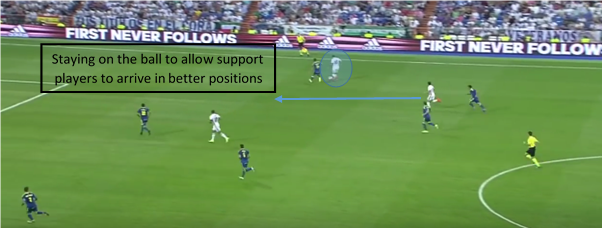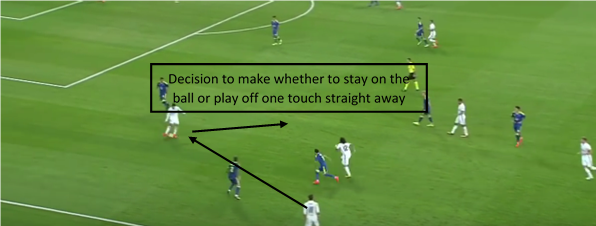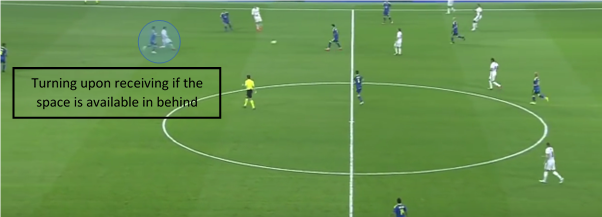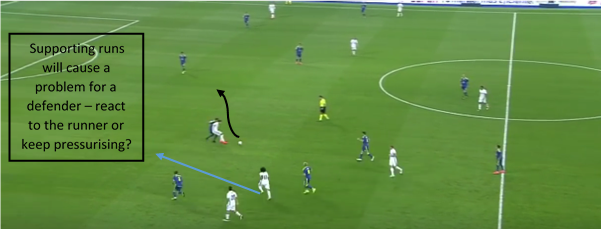By Alex Trukan
Pace in the modern football has become much quicker than ever before. Teams prefer to use fast passing styles and players who are excellent in attacking 1v1 duels. There are times, however, when the best solution is to slow down and stay on the ball as an individual. This might mean, protecting, shielding, standing still or taking that extra touch which is often discouraged by many teams. All of these ways to stay on the ball help to change the situation on the pitch – players off the ball can make movements, opposition will need to adjust. It also helps to secure possession for the team in certain areas of the pitch. As an example: a ball to the lone striker who holds up the ball waiting for support. This article explores different ways to benefit from staying on the ball as an individual.
Staying on the ball longer in the central midfield can have its benefits. A player in possession in the opposition’s half will attract pressure from defenders. This might mean that two or three opposition players will become very narrow. This in turn will open up spaces on the outside to switch the play and pass away from the pressure.

Another example that often happens is when a player on the ball is pressed and isolated in a wide areas. The winger will have possession in the opposition half with no immediate support. The ability to stay on the ball allows the midfielders and strikers to make forward runs and support the player with the ball. This might create an option to play the ball into a space between the opposition full back and centre back.

The player receiving the ball with pressuring defenders has to make a decision whether to secure it or pass it off one touch and combine straight away. This will depend on the position of the supporting players and available space.

If the space is available behind the defense, a player might decide to turn with the ball right away, without securing it first. The body position (which side to secure/receive the ball on) will be dependent on where the supporting runs come from as well as where the space to turn into is.

Any supporting run can be used as a disguise for a defender to cause him a problem. The decision become whether to track the runner or press the player on the ball. The reaction of the defender towards the forward runner (i.e. step in his direction) will allow the player on the ball to turn the opposite way and play forwards.

From a young age players should be encouraged to stay on the ball as well as develop quick decision making abilities so that they can decide whether to keep possession for longer or to combine with others. Players should be able to recognise when the team will benefit from keeping the ball in one area of the pitch for longer. The key is to focus on the runs and movements of the players around the ball.
By Alex Trukan, Development Coach, Nottingham Forest
@AlexTrukan


